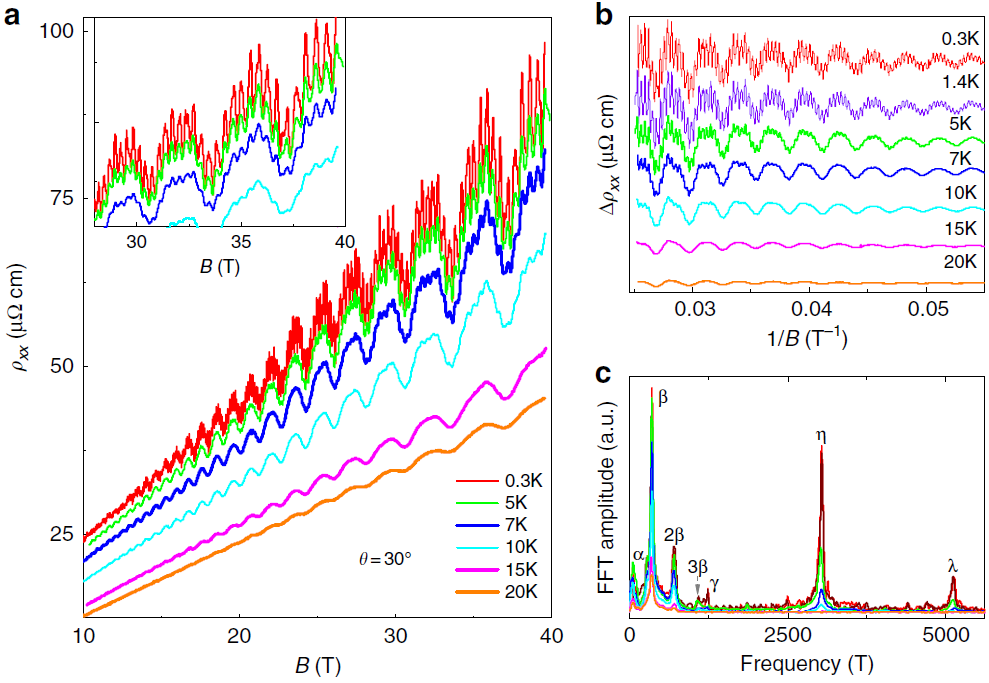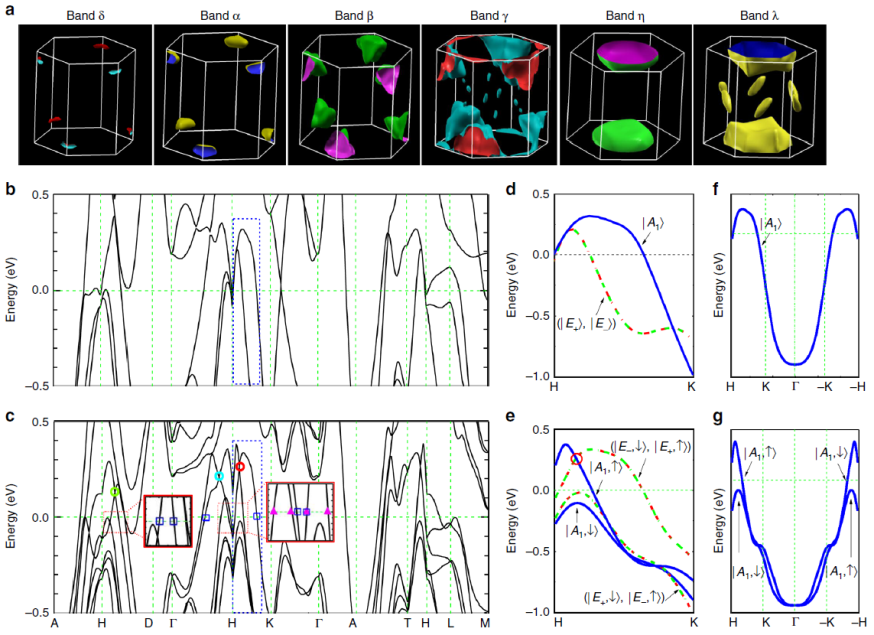Researchers at High Magnetic Field Laboratory, Chinese Academy of Sciences (CHMFL) discovered a new triply degenerate semimetal candidate, trigonal layered PtBi2, under high magnetic field of 40 tesla. And the work was published on Nature Communications.
Topological semimetals hold exotic magneto transport properties (large magneto resistance, chiral anomaly, etc) and ultrahigh mobility, which makes them of great value on future application of low-energy electronics devices, so it has been one of the frontier and hot research field of the condensed matter physics.
Previous studies have discovered three types of topological semimetals, Dirac semimetal, Weyl semimetal and nodal-line semimetal, the quasi particles in which are fourfold or twofold degenerate.
In 2017, Chinese researchers theoretically reported and experimentally discovered triple degenerate fermions for the first time in the world (one of the ten scientific advances of the year).
However, the triple degenerate fermions were only identified in WC-type materials (MoP and WC) at present. Therefore, exploring topological semimetals containing triple degenerate fermionsis of great significance to explore the properties of elementary particles and understand the electronic topology state.
Recently, TIAN Mingliang's research team at CHMFL synthesized high quality trigonal layered PtBi2 single crystal and studied systematic transport properties on water-cooled magnets (WM5, 35T) and the hybrid magnet (40T).
In addition, they further cooperated with researcher HAO Ning at CHMFL and ZHENG fawei at Institute of Applied Physics and Computational Mathematics to study the band structure of layered PtBi2 by ab initio calculations.
According to the experimental and theoretical results, the researchers found that the trigonal layered PtBi2 was a new candidate of triple degenerate semimetal.
It has two characteristics. Firstly, the triple degenerate point in PtBi2 is relatively close to Fermi surface compared with WC and MoP, which corresponds directly to the novel properties of fermions. Secondly, the layered PtBi2 is easily exfoliated and has natural advantages in manufacturing devices, which makes it has important application potential in preparing micro-nano devices and regulating their properties.
This work is of great significance in understanding the electronic topological state, discovering novel physical phenomena, developing new electronic devices and further understanding the properties of elementary particles.
This work was supported by the National Key Research and Development Program of China, the Natural Science Foundation of China and the Hefei Science Center of the Chinese Academy of Sciences.
 |
|
The magneto resistance and quantum oscillations of the layered PtBi2 at different temperatures measured on the 40T hybrid magnet. (Image by the research team) |
 |
|
Six 3D Fermi surfaces and energy band dispersion are calculated theoretically, figure (e) clearly shows the triple degenerate point (Image by the research team) |

